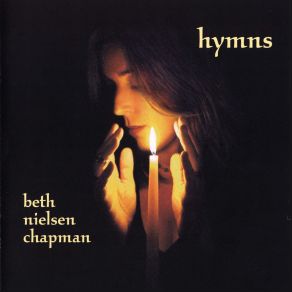Hymns
Download links and information about Hymns by Beth Nielsen Chapman. This album was released in 2004 and it belongs to New Age, Gospel, Country genres. It contains 12 tracks with total duration of 34:54 minutes.

|
|
|---|---|
| Artist: | Beth Nielsen Chapman |
| Release date: | 2004 |
| Genre: | New Age, Gospel, Country |
| Tracks: | 12 |
| Duration: | 34:54 |
| Buy it NOW at: | |
| Buy on iTunes $10.99 | |
| Buy on Amazon $10.99 | |
| Buy on Amazon $8.99 | |
Tracks
[Edit]| No. | Title | Length |
|---|---|---|
| 1. | Ave Verum Corpus | 2:32 |
| 2. | Veni Veni Emmanuel | 3:20 |
| 3. | Tantum Ergo | 3:28 |
| 4. | Adoramus Te | 2:10 |
| 5. | O Salutaris Hostia | 1:51 |
| 6. | O Sanctissima | 3:45 |
| 7. | Panis Angelicus | 2:25 |
| 8. | Salve Regina | 4:01 |
| 9. | Hymn To Mary | 2:58 |
| 10. | Oh God of Loveliness | 3:14 |
| 11. | Dona Nobis Pacem | 1:36 |
| 12. | Ave Maria | 3:34 |
Details
[Edit]As a very successful and celebrated songwriter, Beth Nielsen Chapman has never chosen an easy road to that bounty. In fact, she's consistently managed to avoid trite sentimentality in her work. Her voice shines through her songs no matter who's singing them. This project is a departure for Chapman, though it is one she has been at work on in one form or another for nearly a decade. These hymns, mostly sung in Latin, come from a larger project of hymns from the religions of the world. Chapman grew up Catholic, and these songs were part of the pre-Vatican II liturgy. These pieces are scored for multiple voices. Chapman herself sings soprano as a lead vocalist and alto with songwriter Pam Rose, as well as tenor with her son Ernest in chorale. Her father, Robert Nielsen, is one of four bass singers; songwriter Mike Reid is another. While some of these pieces are a cappella, others feature spare accompaniment on stringed instruments from harps to cello to classical guitar. The material comes from the Roman liturgy, whether it be processional hymns such as "Veni Veni Emmanuel" to devotionals such as "Salve Regina" and responsorials such as "Dona Nobis Pacem" and "O Sanctissima." There are two pieces in English, with one of them, "Hymn to Mary," an original. These performances are humble in scope. They do not reflect the awe of the heavens as many classical performances do, but instead a smaller, more human spirituality and grace. They are earthy, humble, and deeply moving for the limit of their scope. These songs portray the response of the human soul speaking to the God who speaks within, rather than the one that echoes thunderously from the margins of the universe. But there is something else here that makes Chapman's recording of these age-old pieces so compelling. The weight of history can make a song, especially a devotional, feel oppressive and constraining — i.e., it needs to be performed "correctly." Chapman feels no such burden on Hymns. These beautiful antiquities are sung reverently with a simple grace that frees them from their chains and makes them resonate, underscoring their meaning, solace, beauty, and stillness.